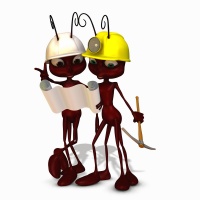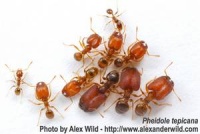Difference between revisions of "Robotics Group"
(First draft layout) |
m (Private sections format error) |
||
| (9 intermediate revisions by 2 users not shown) | |||
| Line 20: | Line 20: | ||
|valign="top" width="10%" rowspan="3" style="border:1px solid #cedff2; background:#f5faff; vertical-align:top;"| |
|valign="top" width="10%" rowspan="3" style="border:1px solid #cedff2; background:#f5faff; vertical-align:top;"| |
||
| − | <h2 id="mp-itn-h2" style="margin:3px; background:#cedff2; font-size:120%; font-weight:bold; border:1px solid #a3b0bf; text-align:center; color:#000; padding:0.2em 0.4em;">Private sections</h2> |
+ | <h2 id="mp-itn-h2" style="margin:3px; background:#cedff2; font-size:120%; font-weight:bold; border:1px solid #a3b0bf; text-align:center; color:#000; padding:0.2em 0.4em;">'''Private sections'''</h2> |
|- |
|- |
||
| Line 37: | Line 37: | ||
|valign="top" width="85%" style="padding: 2px; border:1px solid #ddcef2; color: #000000; background: #faf5ff;"| |
|valign="top" width="85%" style="padding: 2px; border:1px solid #ddcef2; color: #000000; background: #faf5ff;"| |
||
| + | '''Best Video Award, AAAI-11 AI Video Competition.''' |
||
| − | AWARDS |
||
| + | |||
| + | The video "Swarmanoid, the movie" won the Best Video Award at the AAAI-11 AI Video Competition! This video, written |
||
| + | and directed by Mauro Birattari and Rehan O'Grady, presents the main results of the Swarmanoid project, a FET-OPEN |
||
| + | project funded by the European Commission and coordinated by Marco Dorigo. |
||
| + | |||
| + | {{#ev:youtube|M2nn1X9Xlps}} |
||
|- |
|- |
||
| Line 52: | Line 58: | ||
<div style="text-align: right;"> |
<div style="text-align: right;"> |
||
| − | [[News |
+ | [[Robotics Group News | Read all news]] |
</div> |
</div> |
||
| Line 66: | Line 72: | ||
|valign="top" width="15%" style="padding: 2px; border:1px solid #FFEDCC; color: #000000; background: #FFFCE6;"| |
|valign="top" width="15%" style="padding: 2px; border:1px solid #FFEDCC; color: #000000; background: #FFFCE6;"| |
||
| + | [[File:RG_eswarm.jpg|frameless|200x200px]] |
||
| − | Image |
||
|valign="top" width="85%" style="padding: 2px; border:1px solid #FFEDCC; color: #000000; background: #FFFCE6;"| |
|valign="top" width="85%" style="padding: 2px; border:1px solid #FFEDCC; color: #000000; background: #FFFCE6;"| |
||
| + | '''E-SWARM: Engineering Swarm Intelligence Systems.''' |
||
| − | E-SWARM |
||
| + | |||
| + | E-SWARM is a project funded by the European Research Council - Advanced Grants program of the European Union (Grant 246939). |
||
| + | The main case studies have been chosen in the domains of optimization and robotics. In the robotics case study, |
||
| + | we study the use of swarm intelligence as a tool to develop controllers for swarms of cooperating robots. |
||
| + | The principles of swarm intelligence are employed in swarm robotics for the design of robot controllers at the |
||
| + | individual level so as to obtain effective swarm-level behavioral strategies. We will focus on swarm behaviors |
||
| + | characterized by the coordination and cooperation of the members of a group of robots to accomplish tasks that |
||
| + | are beyond the capabilities of a single robot. |
||
| + | |||
| + | <div style="text-align: right;"> |
||
| + | [http://www.e-swarm.org/index.php Read more about E-SWARM] |
||
| + | </div> |
||
|- |
|- |
||
| Line 76: | Line 94: | ||
|valign="top" width="15%" style="padding: 2px; border:1px solid #FFEDCC; color: #000000; background: #FFFCE6;"| |
|valign="top" width="15%" style="padding: 2px; border:1px solid #FFEDCC; color: #000000; background: #FFFCE6;"| |
||
| + | [[File:RG_h2swarm.jpg|frameless|200x200px]] |
||
| − | Image |
||
|valign="top" width="85%" style="padding: 2px; border:1px solid #FFEDCC; color: #000000; background: #FFFCE6;"| |
|valign="top" width="85%" style="padding: 2px; border:1px solid #FFEDCC; color: #000000; background: #FFFCE6;"| |
||
| + | '''H2SWARM: Hierarchical Heterogeneous Swarm.''' |
||
| − | H2SWARM |
||
| + | |||
| + | The main goal of the project is the study of hierarchical communication and control strategies for swarms of |
||
| + | heterogeneous robots, which, despite the differences among sub-groups, coherently operate in an integrated |
||
| + | manner to achieve a common goal. This will be achieved by looking at how Nature structures and organises large |
||
| + | groups, such as ant colonies or honeybee swarms. Natural systems are characterised by different types of |
||
| + | hierarchical organisation (physical, spatial, functional, informational) which evolved to be tightly integrated |
||
| + | and to ensure the survival of the system as a single unit. The H2SWARM project aims at studying the evolution of |
||
| + | cooperative behaviours in hierarchical heterogeneous organisations, and the mechanisms that support hierarchical |
||
| + | organisations in social insects. |
||
| + | |||
| + | <div style="text-align: right;"> |
||
| + | [http://www.esf.org/activities/eurocores/running-programmes/eurobiosas/collaborative-research-projects-crps/h2swarm.html Read more about H2SWARM] |
||
| + | </div> |
||
|- |
|- |
||
| Line 86: | Line 117: | ||
|valign="top" width="15%" style="padding: 2px; border:1px solid #FFEDCC; color: #000000; background: #FFFCE6;"| |
|valign="top" width="15%" style="padding: 2px; border:1px solid #FFEDCC; color: #000000; background: #FFFCE6;"| |
||
| + | [[File:RG_ascens.png|frameless|200x200px]] |
||
| − | Image |
||
|valign="top" width="85%" style="padding: 2px; border:1px solid #FFEDCC; color: #000000; background: #FFFCE6;"| |
|valign="top" width="85%" style="padding: 2px; border:1px solid #FFEDCC; color: #000000; background: #FFFCE6;"| |
||
| + | '''ASCENS: Autonomic Service-Component Ensebles.''' |
||
| − | ASCENS |
||
| + | |||
| + | Self-aware, self-adaptive and self-expressive autonomic components, running within environments which are called |
||
| + | “ensemblesâ€, have been proposed to handle open-ended, highly parallel, massively distributed systems that can span |
||
| + | millions of nodes with complex interactions and behaviours. However, these complex systems are currently difficult |
||
| + | to develop, deploy, and manage. The goal of the ASCENS project is to build ensembles in a way that combines the |
||
| + | maturity and wide applicability of traditional software engineering approaches with the assurance about functional |
||
| + | and non-functional properties provided by formal methods and the flexibility, low management overhead, and optimal |
||
| + | utilization of resources promised by autonomic, adaptive, self-aware systems. |
||
| + | |||
| + | <div style="text-align: right;"> |
||
| + | [http://www.ascens-ist.eu/ Read more about ASCENS] |
||
| + | </div> |
||
|} |
|} |
||
<div style="text-align: right;"> |
<div style="text-align: right;"> |
||
| + | [[Robotics Group Projects | View all projects]] |
||
| − | [[Project's page]] |
||
</div> |
</div> |
||
Latest revision as of 14:03, 12 October 2012
|



